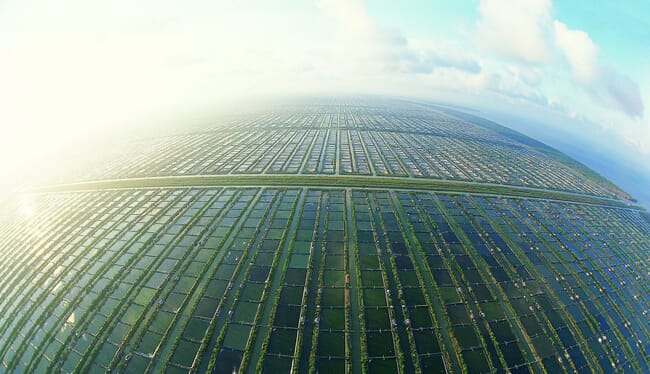About 60 percent of the country’s shrimp ponds are currently fallow, and Alan Koropitan, a deputy in the office of the president’s chief of staff, told Mongabay that: “We must revitalise this area that’s abandoned or poorly managed… over the next five years.”

© Lim Shrimp Organisation
One area that is being targeted for revitalisation is Bumi Dipasena, which is one of the largest areas of intensive shrimp farming in the world, with ponds covering 17,000 hectares of Sumatra’s Lampung province.
Earlier this month, Indonesia’s fisheries minister, Edhy Prabowo pledged to revive the area – which needs improvements to its transport infrastructure as well as the provision of more reliable electricity and clean water.
Other solutions touted for the area include introducing community-based management and phasing out top-down corporate control of the farms – as previously occurred under PT Central Proteina Prima, who operated under a partnership scheme with small-scale farmers.
According to Mongabay, at its peak Bumi Dipasena was producing 200 tonnes of shrimp a day.



